Important notice from the Editor in Chief
Maintaining our Russian site is a delicate matter during the war. We have chosen to keep its content online to help our readers, but we cannot ensure that it is accurate and up to date. Our team endeavors to strike the right balance between giving information to those who need it, and respecting the gravity of the situation.
Who needs a car, anyway? Traveling around Russia with public transportation is easy, even if you don’t know the Russian language just yet. Today, cities are easy to navigate without a car. Whether you’re planning your commute or just a weekend getaway, here are a few key topics to kick off your journey.
- Public transportation in Russia
- Public transportation apps in Russia
- Trains in Russia
- Buses in Russia
- Taking a marshrutka or taxi in Russia
- Long-distance coaches in Russia
- Airports in Russia
- Public transportation discounts in Russia
- How disability-accessible is public transportation in Russia?
- How environmentally friendly is public transportation in Russia?
- Making a public transportation complaint in Russia
- Useful resources
Public transportation in Russia
Although driving in Russia is certainly an option for getting around, there are several factors that make it an off-putting option, such as local driving customs and the notorious traffic jams.
Thankfully, public transportation in Russia is widely available, punctual, and user-friendly. Big cities such as Moscow and Saint Petersburg are home to scores of widely-used bus routes, metro lines, and tramways; in fact, Moscow alone sees 19 million trips on public transportation on an average weekday. The rest of the country is served by one of the world’s most impressive railway networks.
Public transportation apps in Russia
When it comes to route maps and itinerary planning, Russia has plenty of options, including:
- Citymapper provides itineraries involving the metro, bus, tram, trains, and minibuses in two Russian cities: Moscow and Saint Petersburg. Citymapper is available in your browser as well as for Android phones and on iOS.
- Google Maps is the world’s most popular route-planning app, and it works well across Russia. Google Maps is available for iOS and Android, as well as in your browser.
- Yandex (Яндекс) is the largest Russian-language search engine, and, just like its’ US-based counterpart, mobility is a big part of the company. Yandex Maps is great for looking up public transportation directions in Russia, while Yandex Taxi (in Russian) connects riders with taxi drivers in over 300 Russian cities.
For train travelers, Russian Railways has an app of their own. With itinerary searches and ticket purchases, RZD for Passengers is a worthwhile download for Android and iOS users.
Trains in Russia
Few feats of engineering are as impressive as Russia’s railway network. The world’s largest country boasts 85,555 kilometers of track (second only to the United States), carrying millions of passengers annually from everywhere between Moscow (Москва) and Vladivostok (Владивосток).
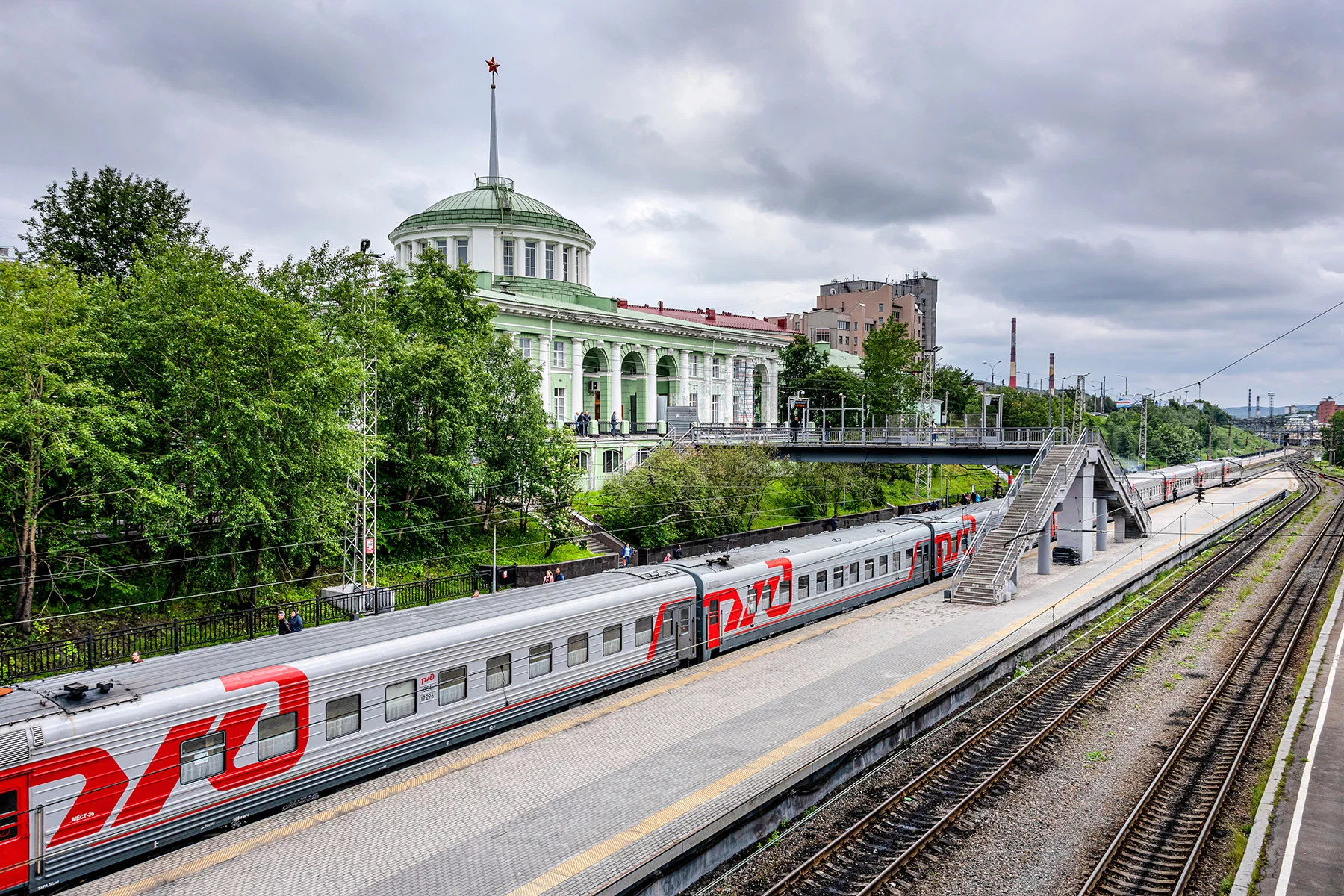
Russia’s national railway company is Russian Railways (Российские железные дороги), often shortened to RZD, RŽD, or RZhD in English (РЖД in Russian). Russian Railways is government-owned. It has almost complete control over passenger services, freight, and infrastructure. RZD operates high-speed and intercity trains; the company also owns dozens of commuter rail networks across Russia.
Taking the train in Russia is generally a good transportation experience. Despite geography and notorious winters, 98% of Russian trains arrived within five minutes of the scheduled time in 2019. Russian Railways has also made fairly herculean efforts to renew its rolling stock across the country in recent years. Generally, only the suburban services in far-flung corners of Russia run with outdated trains.
Train routes in Russia
Russian Railways has one city at its heart: Moscow. In fact, Moscow is home to nine railway terminals (vokzal or вокзал), with each serving as a hub for a particular direction:
- Belorusskaya (Белору́сский вокза́л): west and southwest services towards Smolensk (Смоленск) and Kaliningrad (Калининград). International routes to Belarus.
- Kazansky (Каза́нский вокза́л): southeastern services towards Ryazan (Рязань) and Kazan (Казань). International routes to Abkhazia and Crimea.
- Kiyevsky (Ки́евский вокза́л): southwestern services towards Bryansk (Брянск).
- Kursky (Ку́рский вокза́л): southwestern services towards Kursk (Курск) and eastern services towards Nizhny Novgorod.
- Leningradsky (Ленинградский вокзал): northwestern services towards Saint Petersburg.
- Paveletsky (Павелецкий вокзал): southern services towards Volgograd (Волгогра́д) and Voronezh (Воронеж).
- Rizhsky (Рижский вокзал): western services towards Velikiye Luki (Вели́кие Лу́ки). International routes to Latvia.
- Savyolovsky (Савёловский вокза́л): suburban services.
- Yaroslavsky (Ярославский вокзал): eastern services, including the famous Trans-Siberian Railway.
What it’s like on board a Russian train
Russian Railways divides its trains into a number of different categories, such as high-speed routes, branded trains, and suburban rail.
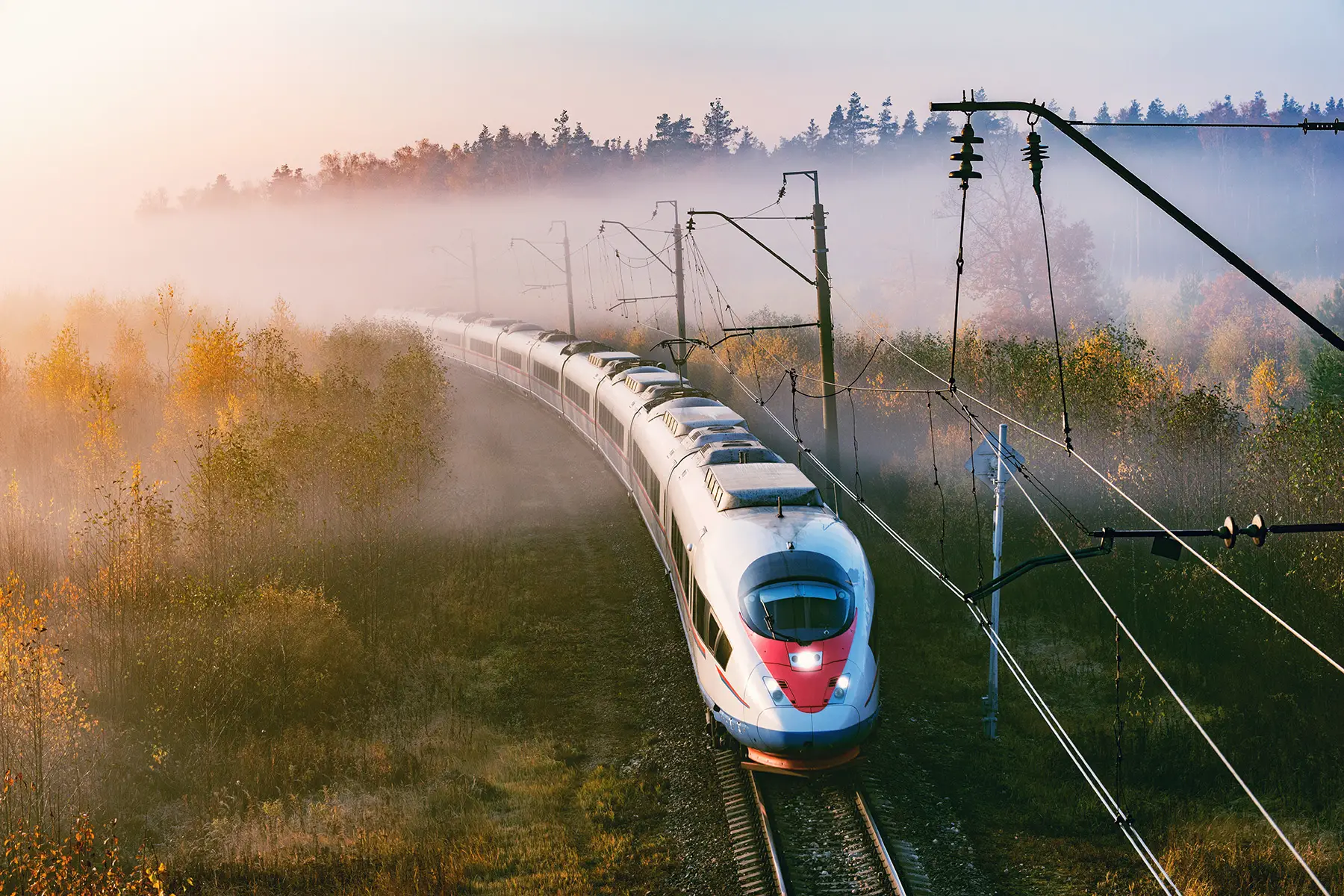
There are four high-speed (скоростной) routes in Russia:
- Allegro: Saint Petersburg – Helsinki
- Lastochka: Saint Petersburg – Nizhny Novgorod (Нижний Новгород)
- Sapsan: Moscow – Saint Petersburg (Санкт-Петербург)
- Strizh: Moscow – Nizhny Novgorod, Moscow – Berlin, Saint Petersburg – Samara (Самара)
However, bear in mind that fewer international trains have been operating in Russia since the country’s invasion of Ukraine in 2022.
After the high-speed services, Russia’s long-distance rail routes also have a number and sometimes an official name to ease the reservation process a bit easier.
Russian Railways has 82 branded trains (фирменный). Each route has a name, taking inspiration from everything from classic literature to indigenous birds. Branded trains typically travel very long distances (over 12 hours or more). As a result, they have sleeping arrangements to accommodate overnight travel. Branded trains are quite comfortable – by law, branded train carriages must be no older than 12 years. These trains are split into the following sections onboard:
- VIP suites (Люкс)
- First-class sleeper carriages (СВ)
- Second-class compartment carriages (Купейные)
- Third-class open-plan carriages (Плацкартные)
- Seated carriages (С местами для сидения)
Unbranded trains (нефирменный) run many of the same routes as their branded cousins, though typically at a much lower cost. However, these trains tend to be older, have fewer services, and may not have English-speaking staff.
Suburban trains in Russia
Russia is also home to dozens of regional commuter train services as well as urban metro networks. An Elektrichka (электри́чка) is a train that serves suburban or commuter routes (Пригородный поезд), especially in the periphery of Russia’s largest cities. Elektrichka routes reach deep into the suburbs and beyond.
In total, Russia has 25 railway companies operating suburban train routes. These suburban passenger companies (пригородными пассажирскими компаниями in Russian, which shortens to ППК) generally fall under the various subsidiaries of Russian Railways, including:
- East Siberian Railway (Восточно-Сибирская железная дорога)
- Far Eastern Railway (Дальневосточная железная дорога)
- Gorky Railway (Горьковская железная дорога)
- Kaliningrad Railway (Калининградская железная дорога)
- Krasnoyarsk Railway (Красноярская железная дорога)
- Kuybyshev Railway (Ку́йбышевская желе́зная доро́га)
- Moscow Railway (Московская железная дорога)
- North Caucasus Railway (Северо-Кавказская железная дорога)
- Northern Railway (Северная железная дорога)
- October Railway (Октябрьская железная дорога)
- Privolzhskaya Railway (Приволжская железная дорога)
- Southeastern Railway (Юго-Восточная железная дорога)
- South Urals Railway (Южно-Уральская железная дорога)
- Sverdlovsk Railway (Свердловская железная дорога)
- Trans-Baikal Railway (Забайкальская железная дорога)
- West Siberian Railway (Западно-Сибирская железная дорога)
The subsidiary websites are only available in Russian. However, they provide all of the relevant information relating to routes, timetables, and fares.
Metro networks in Russia
In addition to suburban rail, seven Russian cities have a metro network of their own:
- Kazan Metro (website in Russian) (Каза́нский метрополите́н in Russian, Казан метросы in Tatar)
- Moscow Metro (in Russian) (Московский метрополитен)
- Nizhny Novgorod Metro (Нижегородское метро)
- Novosibirsk Metro (in Russian) (Новосибирский метрополитен)
- Saint Petersburg Metro (Петербургский метрополитен)
- Samara Metro (in Russian) (Самарское Метро)
- Yekaterinburg Metro (in Russian) (Екатеринбу́ргский Метрополите́н)
Metro stations, especially in Moscow, can be huge, sprawling complexes with multiple interchanges and dozens of exits. Thankfully, massive influxes of tourists over the past decade have led to dramatic improvements to wayfinding for those that can’t read Russian. Signage indicating station names, bus connections, or exits are often in both Cyrillic and Latin scripts. Ticket machines also have multilingual interfaces.
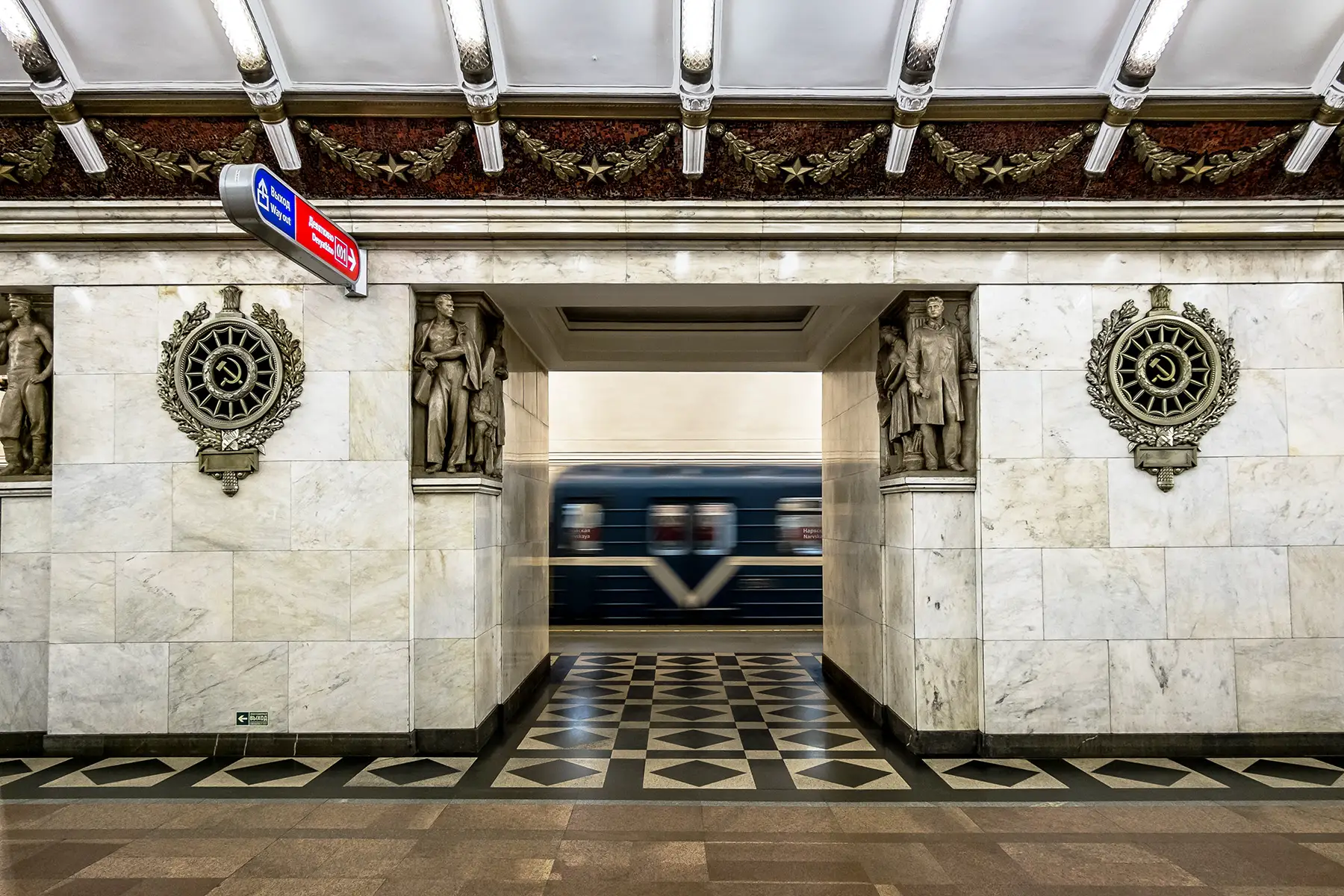
Older metro networks in Russia were built deep underground, primarily for reasons of geology and minimizing disruptions at street level. Station designs are opulent, earning the moniker of palaces for the people. As a result, many of Russia’s metro networks aren’t just convenient ways of getting around town; they are affordable tourist attractions, too.
Train tickets in Russia
Russian Railways release tickets for sale in a variety of intervals prior to the departure: 45 days, 60 days, or 90 days. Tickets are available on the Russian Railways website (which is also available in English), at ticket windows at the train station, at service centers in the station, or through the RZD for Passengers mobile app. Keep in mind, however, that service centers charge customers for the convenience, adding a modest fee to the total cost.
Train tickets in Russia are available in three forms: paper tickets, e-tickets, or e-registration. Paper tickets show all of the information relevant to your departure, arrival, and travel group. A single Russian train ticket can cover multiple passengers if you book them together. E-tickets act as more of a voucher; whereby they are sent to your e-mail address after completing payment and can then be used to collect your tickets at the train station. E-registration offers completely digital tickets – you’ll only need your phone and passport to board the train.
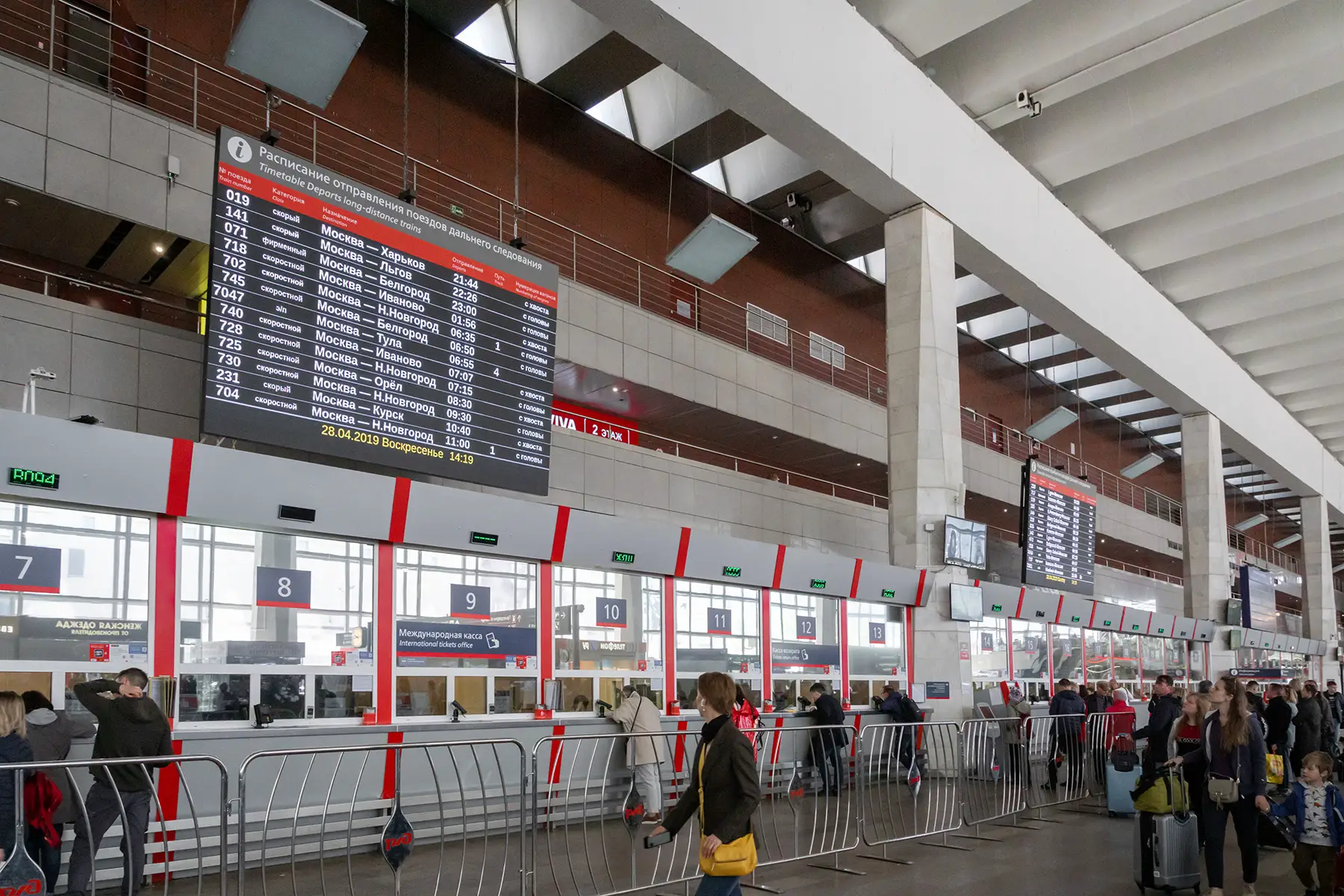
For urban-level transportation in Russia, some cities use contactless smart cards for ticket purchases or storing transport passes. Programs like this include the Troika (Тройка) card in Moscow as well as the Podorozhnik (Подоро́жник) in Saint Petersburg.
Russia is home to one of the most extensive railway networks in the world. As a result, full train timetables or complete network maps are a thing of the past. Instead, Russian Railways has a searchable online timetable in English, so you can find itineraries with the English-language names of cities in the Latin alphabet.
International trains in Russia
Russia has land borders with 14 different countries, so there are plenty of chances to catch a train across the border.
Russian Railways provides services to the following countries:
You can catch a train to other countries occasionally; however, international departures since the Russian invasion of Ukraine. Countries that are no longer accessible by rail directly from Russia include Austria, China, Czechia, Estonia, Finland, France, Germany, Italy, Latvia, Lithuania, Mongolia, North Korea, and Poland.
Tickets for international journeys may not be available online from the English-language website of Russian Railways, however; in fact, they may require an in-person purchase. Check with your local ticket office in Russia for even more details.
Buses in Russia
Russia doesn’t have a single public transportation authority; as a result, buses are run by a public transportation company at either the municipal level or whatever kind of federal subject the city is in.
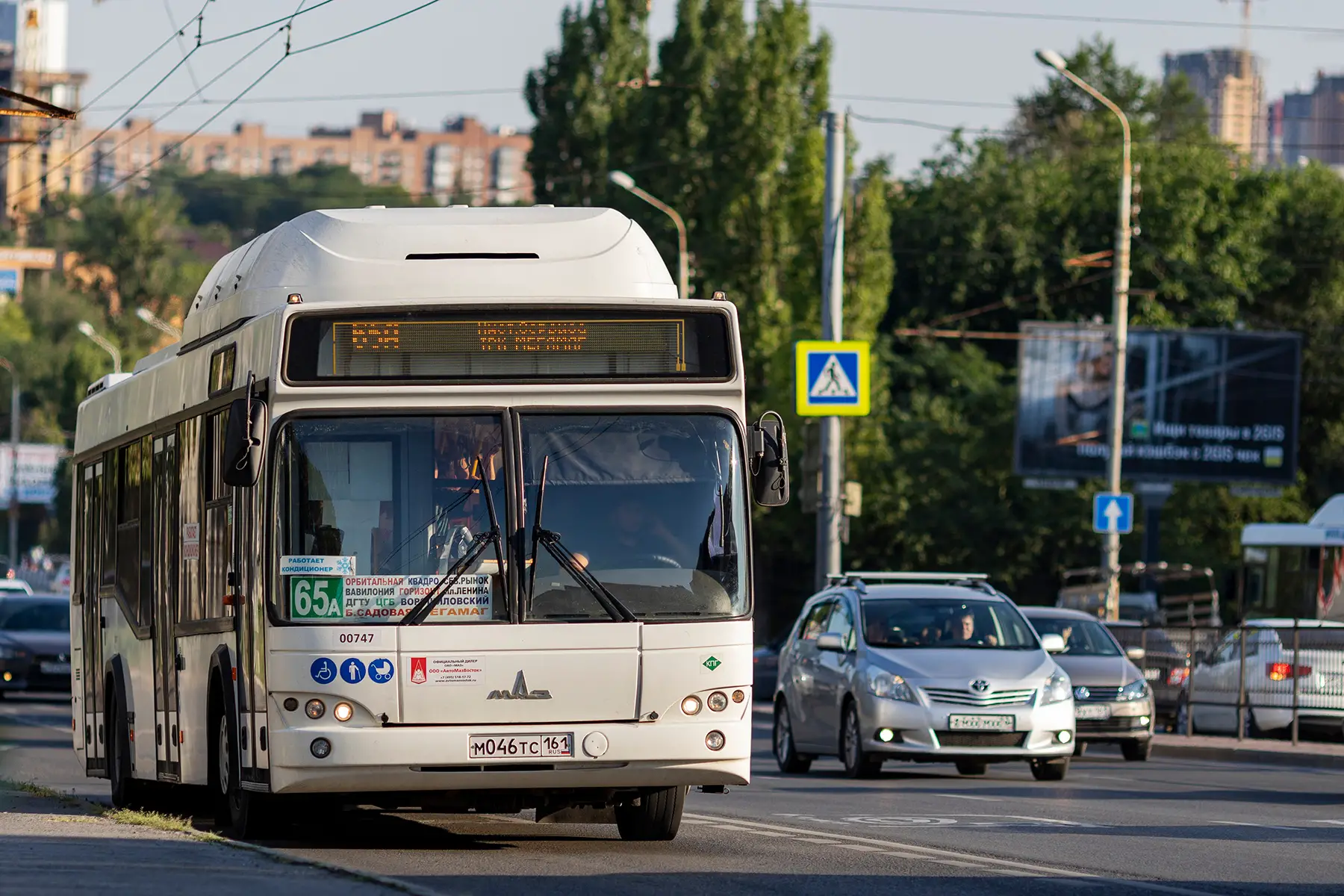
Public bus transportation companies in Russia tend to be government-owned, either locally or regionally. Some of the bus companies in Russia’s larger cities include the following:
- Chelyabinsk (Челябинск): Obshchestvennyy Gorodskoy Transport (Общественный городской транспорт) (in Russian)
- Kazan (Казань): Transportnyy Goroda Kazani (Транспортный города Казани) (in Russian)
- Moscow: Mosgortrans (Мосгортранс) (in Russian)
- Nizhny Novgorod: Nizhegorodpassazhiravtotrans (Нижегородпассажиравтотранс) (in Russian)
- Novosibirsk (Новосибирск): GorElektroTransport (ГорЭлектроТранспорт) and Novosibirsk Avtobus (Новосибирский автобус) (both websites in Russian)
- Omsk (Омск): Omskiy Avtobus (Омский автобус)
- Rostov-on-Don (Ростов-на-Дону): various companies with no central authority or service provider. Rostov Transport has route and fare information in English.
- Saint Petersburg: Gorelektrotrans (Горэлектротранс) and Passazhiravtotrans (Пассажиравтотранс) (both websites in Russian)
- Samara: SamaraAvtoGAZ (СамараАвтоГАЗ) (in Russian)
- Yekaterinburg (Екатеринбург): Gortrans (Гортранс)
There is no set system of fares for bus transportation in Russia. Some cities have a uniform fare, regardless of mode; others have bus-specific pricing or even route-specific pricing.
Payment methods also vary. Moscow, for instance, encourages contactless fare collection through a bank card or smartphone, while other cities are strictly cash-only domains.
Taking a marshrutka or taxi in Russia
Countries in the former Soviet Union are full of routed taxicabs, commonly referred to in Russia as a marshrutka (маршрутка). A marshrutka in Russia is usually a large van or minibus that shares some similarities to other forms of public transportation. Marshrutki typically have specific routes and route numbers but are run by private companies.

Marshrutka services vary wildly across Russia. In some areas, marshrutki only stop at bus stops and there’s little difference between the experience of a public bus or a marshrutka. In smaller cities far away from the capital, marshrutki stop whenever someone flags them down or if a passenger requests it. Be aware, however, that taking a marshrutka in rural areas can be intimidating if you don’t know Russian well.
If a shared taxi doesn’t interest you, conventional taxis are also widespread in Russian cities. Flagging down a taxi from the street is shockingly easy. Don’t be surprised if your attempt to flag down a taxicab results in a random car offering you a ride instead. Some taxi drivers may ask you to share the cab with additional passengers; just refuse the request politely and firmly.
If your Russian-speaking abilities are limited, plenty of taxi-hailing apps are available in Russia. They include the following:
- Yandex Taxi (in Russian)
- Gett (in Russian)
- Taxovichkof
Long-distance coaches in Russia
Although almost every city in Russia has a reasonable transportation connection to others by train, this isn’t always the case. One thing you can count on in Russia is that every city and town has a bus station. A bus station in Russia is called an avtokzal (Автовокзал), generally sitting in a reasonably central part of town and offering journeys up to around six hours in length.
Keep in mind, though, that the bus is often the inferior option to taking the train. Russia’s railway network is impressively efficient, even when covering distances of over 2,000 kilometers. A local might wonder why you would opt for a cramped and overpriced space on a bus when you have access to a bed, bathroom, and a place to make a hot cup of tea for a fraction of the price.
To calculate how much your ticket would amount to, check with your local operator, or with a third-party website such as Busradar.
Airports in Russia
As the largest country in the world, it’s no surprise that domestic flights remain an integral part of transportation in Russia. In fact, some of the longest domestic routes in Europe are in Russia, including the eight-hour journey from Moscow to Petropavlovsk-Kamchatsky.

The busiest airports in Russia are:
- Sheremetyevo International Airport (Международный аэропорт Шереметьево) in Moscow
- Domodedovo International Airport (Московский аэропорт Домодедово) in Moscow
- Vnukovo International Airport (Международный аэропорт Внуково) in Moscow
- Pulkovo Airport (Аэропорт Пулково) in Saint Petersburg
- Sochi International Airport (Международный Аэропорт Сочи) in Sochi
Russia’s most prominent domestic airlines are the government-owned Aeroflot (Аэрофло́т) and Rossiya (Россия), whereas the most well-known private airlines are S7 Airlines and Utair (in Russian).
International flights to and from Russia are currently limited due to the Russian invasion of Ukraine. Nevertheless, there are still plenty of flights going through Russia. Some of the most popular international airlines currently are Turkish Airlines, Uzbekistan Airways, and Belavia.
If you are traveling to Russia from a member of the Commonwealth of Independent States, you do not need a visa to travel to Russia. If you are traveling from elsewhere, you will most probably need a Russian visa to enter the country.
Public transportation discounts in Russia
For train journeys in Russia, Russian Railways has a bonus points program called RZD Bonus (РЖД Бонус). Travelers accumulate points with the card by entering the card details while buying train tickets and can redeem them later for discounts on tickets.
Beyond the loyalty program, Russian Railways also has a variety of discount categories for international journeys. Discount rates vary but are available for children, groups, and those booking well in advance.
Urban public transportation providers in Russia also have discounted passes available for certain groups, although these differ depending on the city. Moscow, for instance, has concession passes for students or those receiving social services, while Saint Petersburg has passes for commuters. Check with your municipality in Russia or the local public transportation authority for more information on discounts.
How disability-accessible is public transportation in Russia?
Russia is not a country known for its’ disability-accessible infrastructure; in fact, Human Rights Watch issued a scathing report in 2013 about Russia’s poor infrastructure for those with disabilities. While progress is pending, Russian cities lag behind their western and central European counterparts.
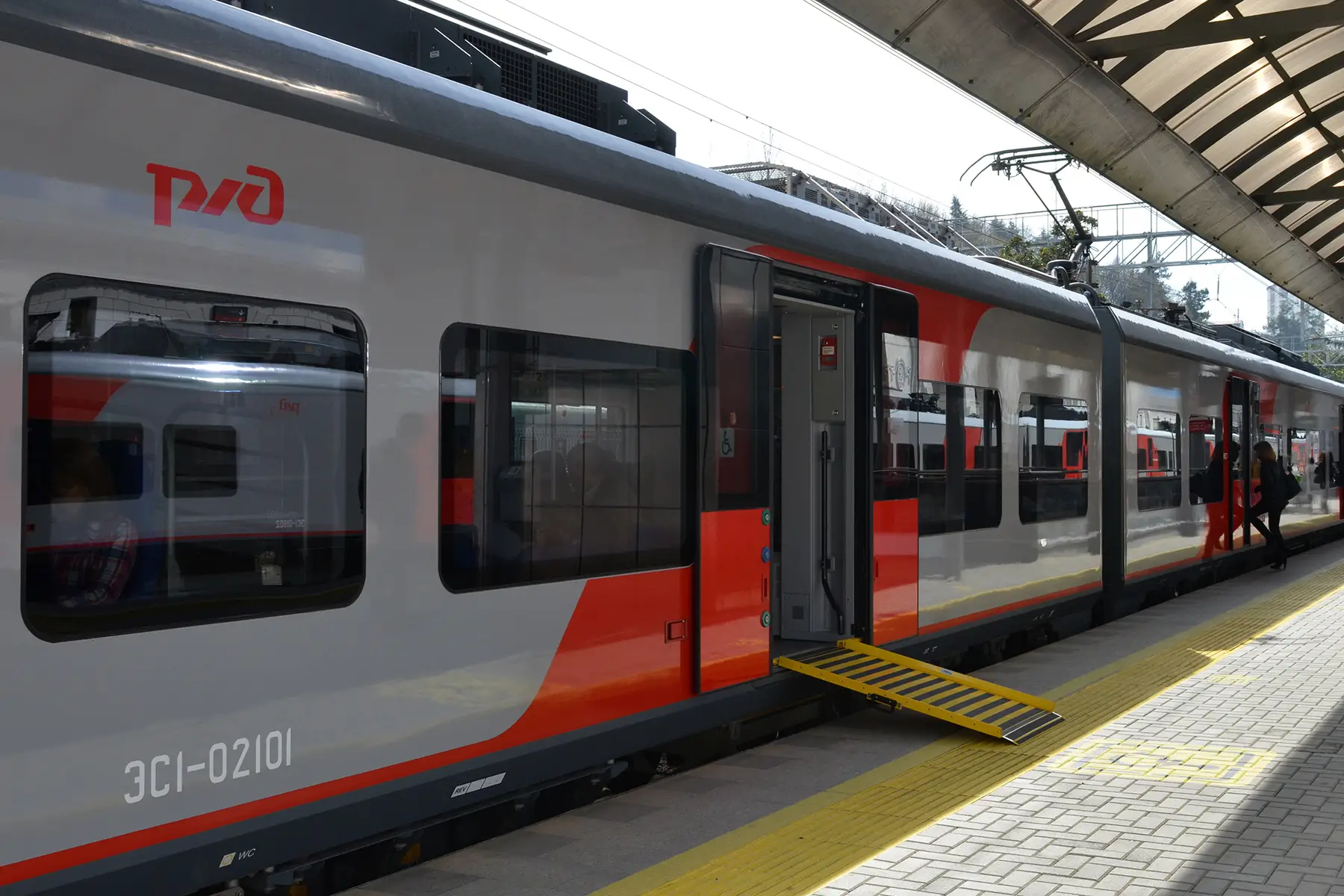
For those taking the train, Russian Railways has a Mobility Assistance Center that you can reach by phone 24 hours a day. Despite the longer opening hours, assistance requests must be in advance and the schedule depends on the nature of your request:
- At least one day before departure: for support at the station (e.g., between the platform and a vehicle outside of the station).
- At least three days before departure: for reservations on long-distance or high-speed trains.
- More than 14 days before departure: for reservations on services that don’t normally travel with an accessible carriage. These requests require more time in advance because Russian Railways staff ensure that the train has an accessible carriage added to it.
Russian Railways are careful to note that their mobility support staff are not medical professionals.
Other methods of public transportation in Russia are generally less developed when it comes to accessibility. For instance, Moscow’s famous metro network is largely inaccessible to those with mobility issues. Buses and trolleybuses, on the other hand, usually have either step-free access or a ramp to ensure everyone can board.
How environmentally friendly is public transportation in Russia?
Russia’s environmental record is generally quite poor. As the country’s economy is still fairly reliant on heavy industry and resource extraction, water pollution in Russia is rampant and drivers are hesitant to make the switch to electric vehicles. In Moscow, most residents still commute by car despite significant improvements to bus timetables and local infrastructure.
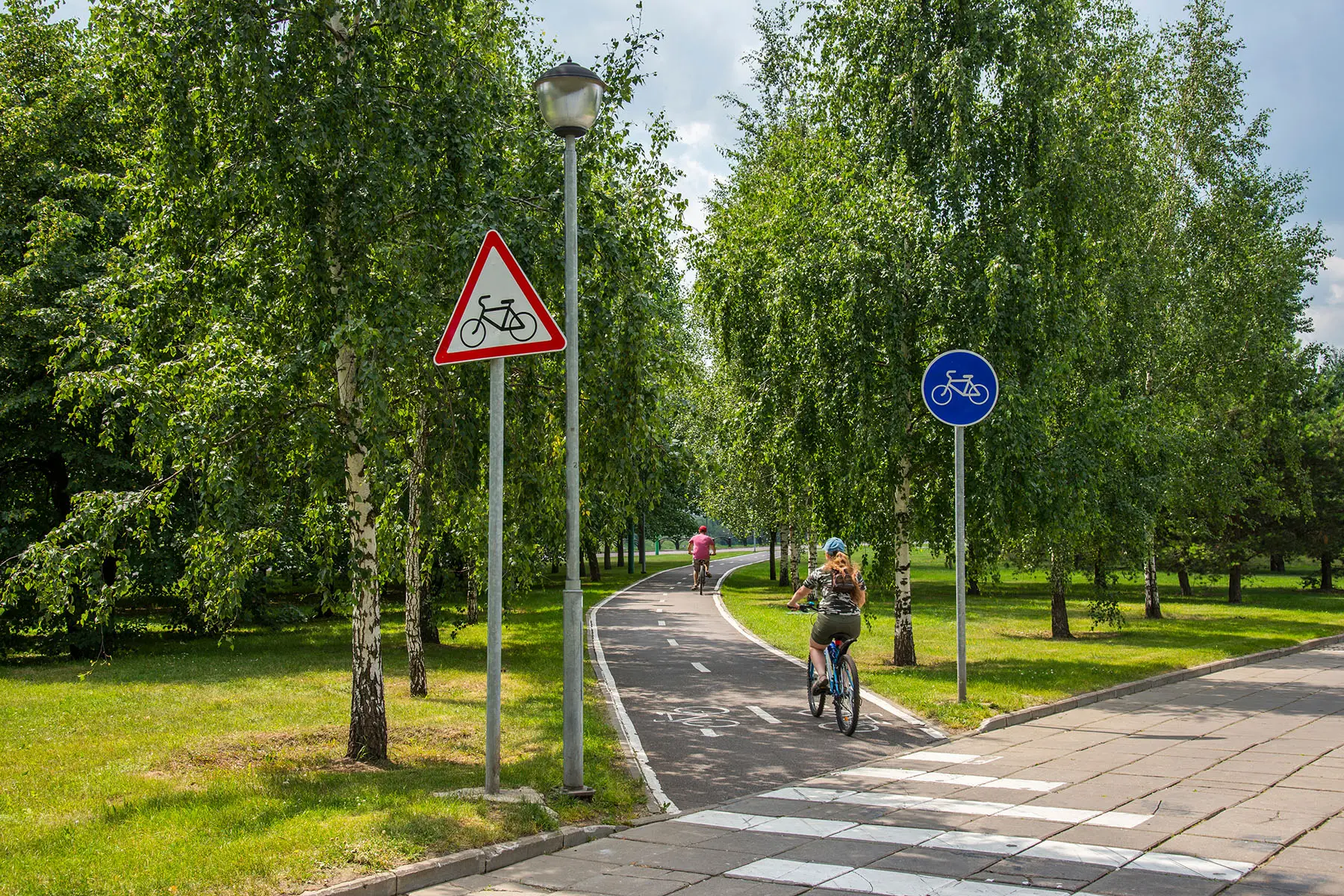
As it turns out, though, public transportation in Russia could teach the rest of the Russian economy a thing or two about sustainability. Electric vehicles are quite common among Russia’s public transportation fleets, especially in larger urban centers. Moscow alone has over 1,000 electric buses, one of the largest electric bus fleets in Europe. The capital is aiming to have a completely electric bus fleet by 2030.
Outside of the capital, dozens of other Russian cities have tram networks or trolleybuses that draw electricity from overhead power lines. Local trains are also low-emission; the beloved Elektrichka trains are almost always electrical multiple-unit trains and have been for over a century.
Making a public transportation complaint in Russia
In Russia, complaints relating to transport services should go directly to the public transportation authority involved.
Some of the public transportation companies in Russia have dedicated forms for customer complaints or feedback, including the Saint Petersburg Metro and Mosgortrans (in Russian). Travelers in need of assistance in Moscow can call 3210 from a Russian phone or +7 (495) 539 54 54 from a non-Russian phone. Russian Railways also lists contact numbers and e-mail addresses depending on your query.
Useful resources
- Gorelektrotrans – bus company in Saint Petersburg
- GorElektroTransport – bus company in Novosibirsk
- Kazan Metro – metro in Kazan
- Moscow Metro – metro in Moscow
- Moscow Transport – transport information for Moscow
- Mosgortrans – bus company in Moscow
- Nizhegorodpassazhiravtotrans – bus company in Nizhny Novgorod
- Nizhny Novgorod Metro – metro in Nizhny Novgorod
- Novosibirsk Metro – metro in Novosibirsk
- Obshchestvennyy Gorodskoy Transport – bus company in Chelyabinsk
- Passazhiravtotrans – bus company in Saint Petersburg
- Rusavtobus – bus company in Rostov
- Russian Railways – Russia’s national railway operator
- Saint Petersburg Metro – metro in Saint Petersburg
- Samara Metro – metro in Samara
- SamaraAvtoGAZ – bus company in Samara
- Transportnyy Goroda Kazani – bus company in Kazan
- Yekaterinburg Metro – metro in Yekaterinburg




